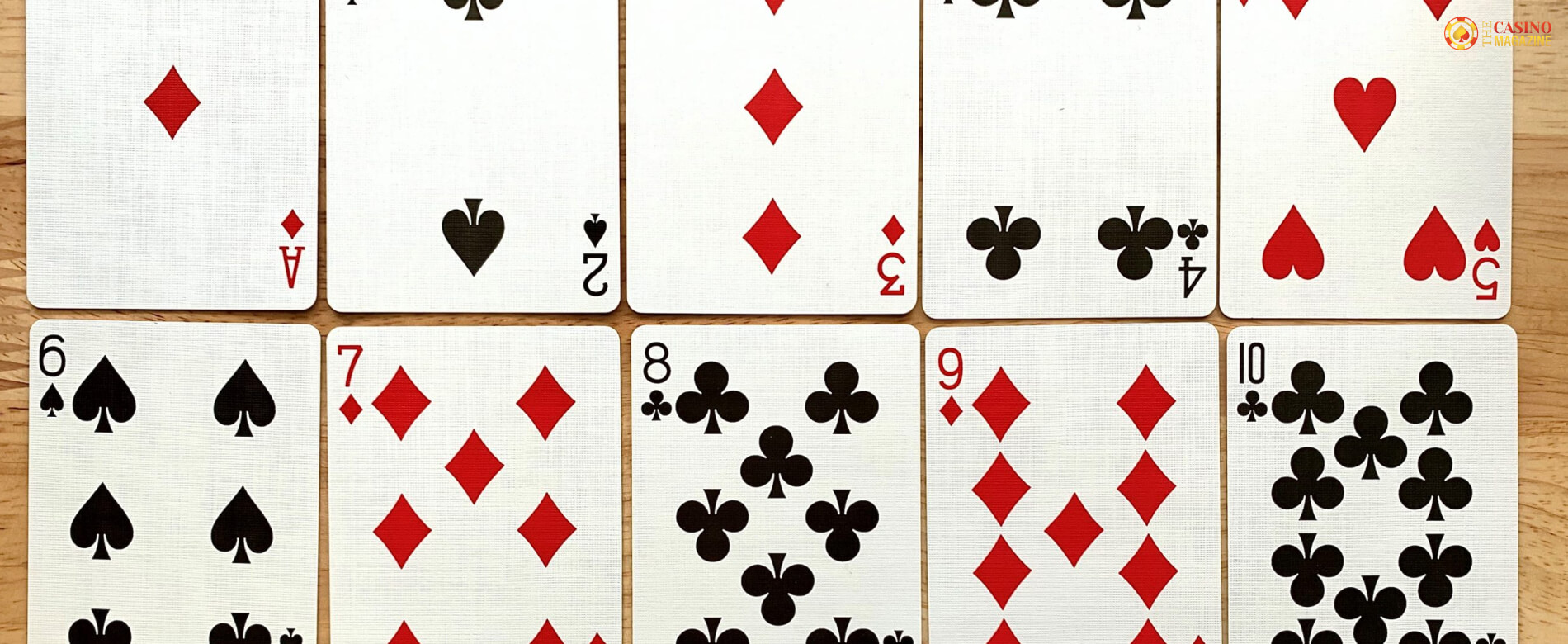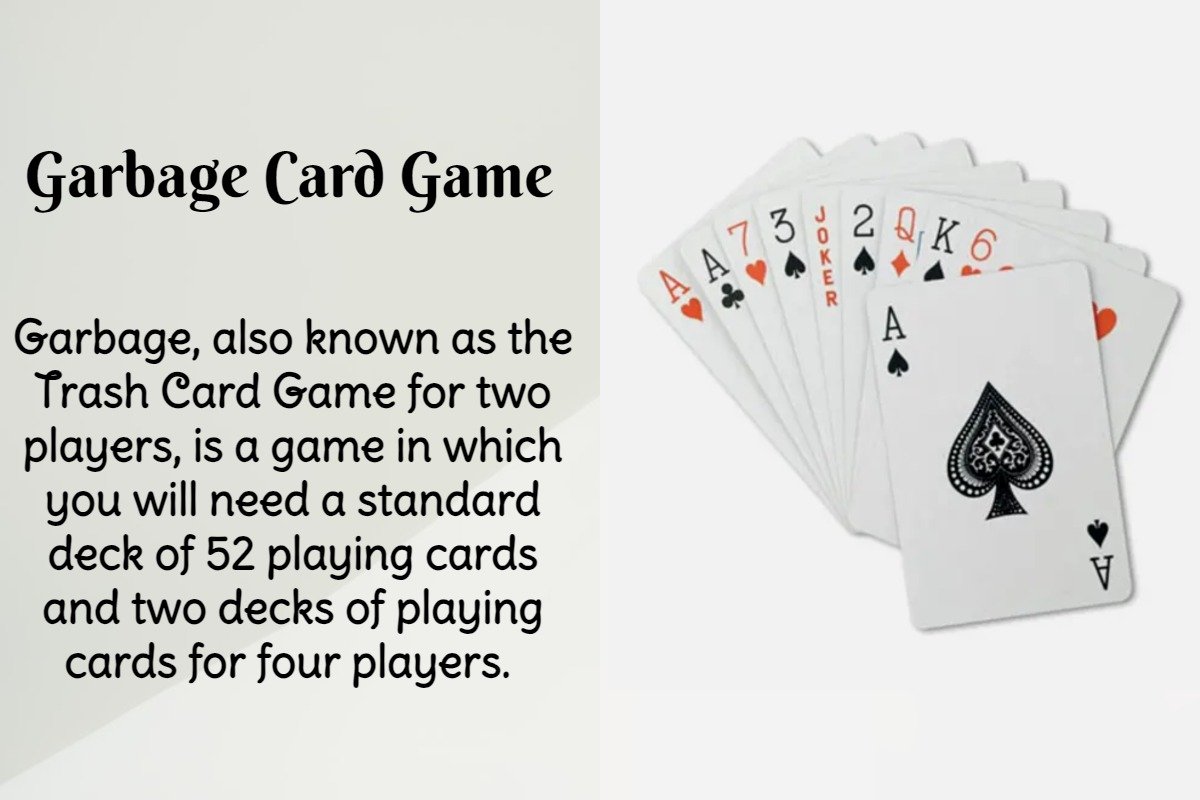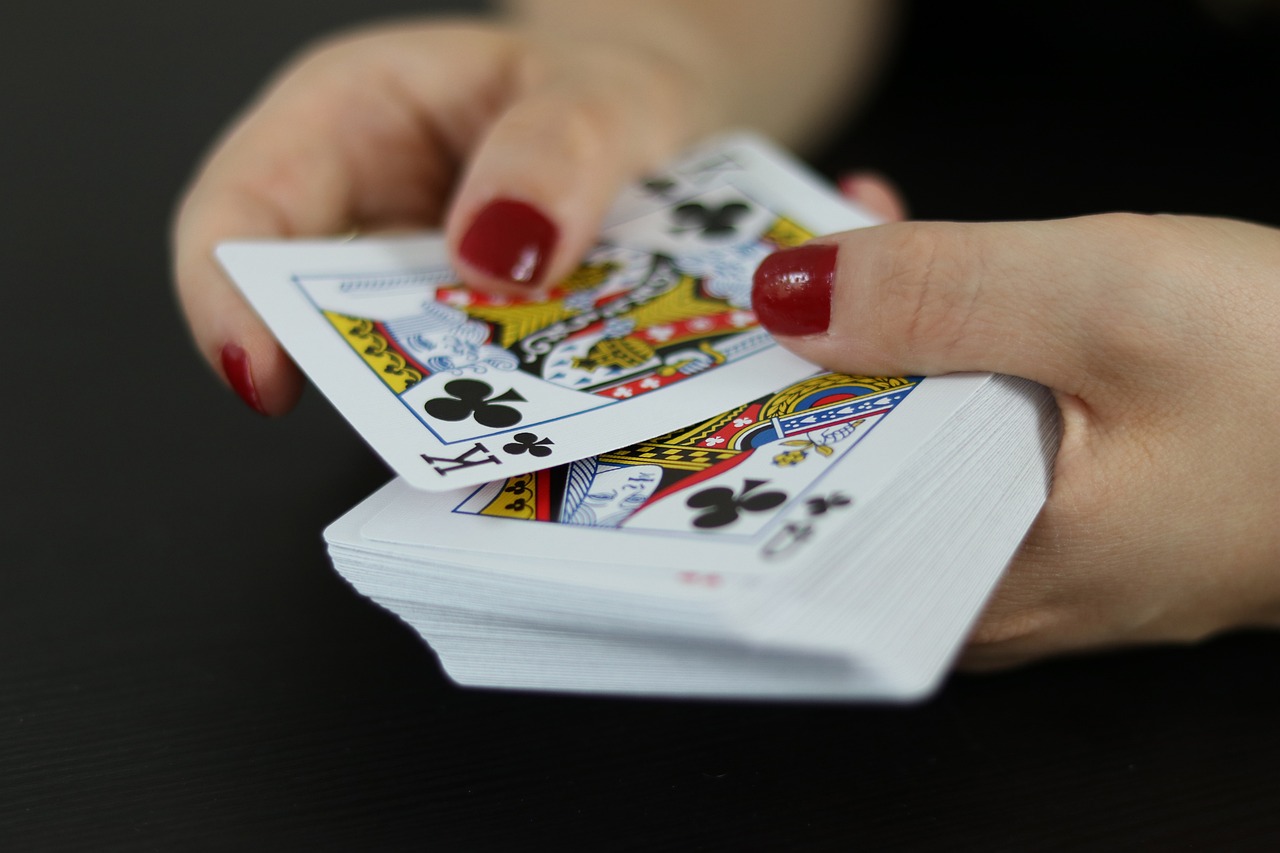Do you know, there's a simple card game out there, often called "Trash" or "Garbage," that brings a whole lot of fun to any gathering? It's that kind of game you can pick up in just a few minutes, yet it offers enough little strategic choices to keep things interesting. You really can enjoy it with friends or family, perhaps on a quiet evening or during a lively afternoon, and it's quite good for all ages, actually.
This particular game, you see, is all about getting rid of cards in a specific way, which is kind of similar to how some other card games use the idea of "trashing" cards. In games like Dominion, for instance, players might trash cards to make their deck better, as my text points out. It's about making your hand or your play area more effective, you know, by removing things you don't need right then.
Here, we are going to walk through the complete trash card game rules, step by step. We will cover everything from setting up the game to how a round plays out and, very importantly, how you win. We will also touch on some common questions and variations, so you can make the game your own. It's really quite straightforward, and you will be playing in no time, that is for sure.
Table of Contents
- What You Need to Play Trash
- Setting Up the Game
- How to Play a Round
- Winning a Round and the Game
- Common Questions About Trash Card Game Rules
- Variations to Keep It Fresh
- The Concept of Trashing Cards in Games
What You Need to Play Trash
To get started with the Trash card game, you actually need very little. It is pretty simple, you know. You just need a standard deck of playing cards, sometimes two decks if you have more players. Typically, one deck works well for two to three players. If you have four or more people wanting to join in, using two decks mixed together is a good idea. This makes sure there are enough cards for everyone, and you do not run out too quickly, which could be a bit frustrating.
You also need a clear space, maybe a table, where everyone can lay out their cards. Each player will have a little area in front of them where they put their cards face down. This is sometimes called their "tableau" or "layout." It's just a spot to keep things organized, you see. So, really, it is just cards and a flat surface, that is all.
Setting Up the Game
Setting up a game of Trash is pretty quick, which is nice. First, you need to decide how many cards each player will start with. The most common way to play is for each player to get ten cards. These cards are put in two rows of five, face down, right in front of them. This forms their personal "trash pile" or "layout," as it were. So, you have ten spots waiting to be filled, you know.
Once everyone has their ten face-down cards, the rest of the deck becomes the draw pile. You place this pile face down in the middle of the playing area. Then, you flip the top card of the draw pile face up right next to it. This card starts the discard pile. It is pretty much ready to go at that point, you see, just waiting for the first player to take a turn.
How to Play a Round
The goal of a round in Trash is to be the first player to turn all ten of your face-down cards into a sequence, from Ace (which is 1) up to 10. Kings are wild cards, and Queens and Jacks are usually "trash" cards that you just get rid of. It is a race, more or less, to complete your sequence before anyone else does. This is where the "trashing" comes in, as you swap out unwanted cards for the ones you need. It is a bit like cleaning up your area, you know, getting rid of the clutter.
Players take turns clockwise. The person to the left of the dealer usually goes first. Each turn involves drawing a card and trying to place it in your layout. If you cannot place it, or if you draw a card you do not need, you simply discard it. It is a rather straightforward process, actually.
Taking Your Turn
When it is your turn, you always start by drawing the top card from either the main draw pile or the top card from the discard pile. If you take from the discard pile, you must use that card, you know, you cannot just put it back. This is a pretty key choice, as it can sometimes give you exactly what you need, or it might force you to change your plans a little. So, you draw that card, and then you look at it to see what it is, naturally.
Making a Match
If the card you draw is a number from Ace (1) to 10, and you have a face-down card in that corresponding position in your layout, you can place it there. For example, if you draw a 5, and you have a face-down card in your fifth position, you would place the 5 face up on that spot. The card that was originally face down in that spot is then picked up, and that becomes the card you are now holding. You then try to play that new card in its correct spot, and you keep going, you know, as long as you keep finding matches. Kings are wild, so they can go in any position from 1 to 10, which is pretty handy. They can fill any gap you might have, which is rather nice.
Drawing from the Discard Pile
Sometimes, the top card on the discard pile is exactly what you need. Maybe it is the 7 you have been waiting for to complete your seventh spot. If you decide to take that card, you pick it up, and then you must use it in your layout, just like you would a card drawn from the main pile. You cannot just pick it up and then put it back down, you see. This can be a smart move, especially if you know what you need and it is right there for the taking. It is a bit of a gamble, though, because once you take it, that is your card for the turn, more or less.
Ending Your Turn
Your turn keeps going as long as you can make matches and place cards in your layout. So, you draw a card, play it, pick up the card that was there, and then try to play that new card, and so on. This chain reaction can sometimes be quite long, which is fun. However, your turn ends when you draw a card that you cannot play. This happens if you draw a Queen or a Jack, because those cards do not have a corresponding spot (1-10) in your layout. Also, your turn ends if you draw a number card that you already have face up in its spot, or if you draw a King but all your spots are already filled with number cards. When your turn ends, you simply discard the unplayable card face up onto the discard pile. It is pretty straightforward, you know, just put it down and the next player goes.
Winning a Round and the Game
A round of Trash ends when one player successfully turns over all ten of their face-down cards, from Ace through 10, including any Kings used as wild cards. That player yells "Trash!" (or "Garbage!"), and the round is over. Everyone else then counts how many face-down cards they still have in their layout. This number is their score for that round. The goal is to have the lowest score, so you want to have as few face-down cards as possible, you know.
The game of Trash is usually played over several rounds. After each round, the player who won the previous round (the one who called "Trash!") gets to remove one card from their starting layout for the next round. So, if they started with ten cards, in the next round, they only start with nine. The player who reaches zero cards in their layout first, meaning they win a round when they only had one card left to flip, is the overall winner of the game. It is a pretty neat way to keep things fair and give everyone a chance to catch up, or pull ahead, you see. It is quite a good system, actually, for a simple game like this.
Common Questions About Trash Card Game Rules
People often have a few questions when they first learn the trash card game rules. It is pretty natural, you know, to want to get things right. Here are some of the most common ones, with some clear answers, so you can play without any confusion. Knowing these little details can really help you feel more comfortable with the game, which is rather important for having a good time.
What happens if I draw a card I already have face up?
If you draw a card, say a 4, and you already have a 4 face up in your fourth position, you cannot play that drawn 4 in your layout. Since you cannot make a match, your turn ends. You simply discard the 4 face up onto the discard pile. It is pretty simple, you know, just put it down and wait for your next turn. This is why having Kings is so useful, they can fill any spot, even if you already have the number, just to keep your turn going, that is.
Can I choose not to play a card if I can?
No, you really cannot choose not to play a card if it has a spot in your layout. If you draw a 7 and your seventh position is still face down, you must place the 7 there. You then pick up the face-down card that was in that spot and continue your turn with that new card. The rules are pretty clear on this, you know, you play it if you can. This keeps the game moving and adds a bit of pressure, which is quite fun.
What if the draw pile runs out?
If the main draw pile runs out of cards, you simply take the discard pile, shuffle it thoroughly, and then turn it over to create a new draw pile. The top card of this newly shuffled pile is then turned over to start a new discard pile. It is pretty much a continuous game, you see, so you never really run out of cards until someone wins the round. This ensures the game can keep going, which is good, as it means more playtime, that is for sure.
Variations to Keep It Fresh
One of the nice things about simple card games like Trash is that you can easily change the rules a bit to make it more interesting or to fit your group. My text actually mentions how expansion packs can offer "alternative rules to keep the game fresh" for games like "Can't Catch Harry," and the same idea applies here. These little tweaks can really change how the game feels, you know, and keep everyone engaged. It is quite fun to experiment with them.
- Different Starting Cards: Instead of starting with ten cards, you could start with seven, or even twelve. This changes the length of the game. Fewer cards make for a quicker game, while more cards make it a bit longer and perhaps more strategic. It is pretty flexible, you see, so you can adjust it to your liking.
- Aces Wild: Some people play with Aces also being wild cards, just like Kings. This makes it a bit easier to complete your layout, as you have more chances to fill any spot. It can speed up the game, which is nice if you are looking for a quicker round.
- No Kings Wild: For a harder game, you can play where Kings are not wild. They would then just be "trash" cards like Queens and Jacks. This makes it much more challenging to complete your layout, as you really need to draw the exact number cards. It is a rather tough way to play, actually, for those who like a challenge.
- Two Decks for All: Even with fewer players, you could mix two decks. This makes the game a bit more unpredictable, as there are more of each card. It can also make it harder to remember what has been discarded, which adds a layer of complexity, you know.
The Concept of Trashing Cards in Games
The term "trash" in card games can mean a few different things, and it is pretty interesting to see how it applies. In the "Trash" card game we have been talking about, you are literally trying to "trash" or get rid of your face-down cards by replacing them with the correct sequence. It is a bit like cleaning out your "recycle bin" or "trash folder" on a computer, as my text describes, making space for what you really need. You are aiming to clear out the unwanted stuff, you know, to get to your goal.
In other card games, like Dominion, "trashing" a card means removing it from your deck permanently, or at least for the rest of that game. My text points out that "you can trash any and every card in your deck," and that this "makes cards like chapel and steward so powerful." This kind of trashing is a powerful strategy because it makes your deck more efficient. By getting rid of less useful cards, you increase the chances of drawing the cards you really want, which is pretty clever, actually. It is a way to refine your strategy, you see, and make your turns more impactful.
So, whether it is in the game "Trash" where you are swapping cards in your layout, or in a deck-building game where you are thinning your deck, the idea of "trashing" cards is about improving your situation by removing something. It is about making your collection of cards work better for you. This concept is pretty generous in its timing, too, as my text says, allowing for flexible play. You can learn more about card game strategies on our site, and we also have a page dedicated to other popular family card games, which might be worth a look.



Detail Author:
- Name : Prof. Ocie Stamm
- Username : zboncak.mariano
- Email : fconroy@gmail.com
- Birthdate : 1992-10-28
- Address : 6454 Jesus Mountains Adelastad, MN 31958
- Phone : 513-539-6588
- Company : Prohaska-Kunze
- Job : Postmasters
- Bio : Laborum inventore nam vel est. Et dolorum commodi voluptatum rerum. Rem dolorum aliquid voluptatem sapiente nobis quo cumque aspernatur.
Socials
facebook:
- url : https://facebook.com/dbotsford
- username : dbotsford
- bio : Ea molestias incidunt harum voluptatibus sed.
- followers : 4816
- following : 1727
tiktok:
- url : https://tiktok.com/@desmondbotsford
- username : desmondbotsford
- bio : Perferendis tempora blanditiis reprehenderit enim rerum voluptas.
- followers : 3305
- following : 926
linkedin:
- url : https://linkedin.com/in/desmondbotsford
- username : desmondbotsford
- bio : Repellendus dolorem quia et quo.
- followers : 4720
- following : 1128
instagram:
- url : https://instagram.com/desmond_botsford
- username : desmond_botsford
- bio : Quia tempora fuga qui repudiandae. Doloribus facilis numquam eaque eveniet eligendi et.
- followers : 513
- following : 733
twitter:
- url : https://twitter.com/botsford1979
- username : botsford1979
- bio : Adipisci et quis non dolor tempora et necessitatibus. Voluptas corporis ab et consectetur ipsam.
- followers : 444
- following : 727



























